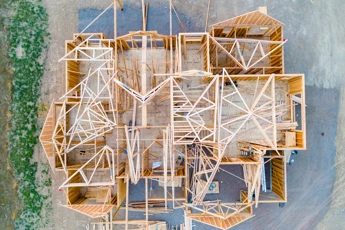Drilling down into the details, a sustainable home is one that respects resources, optimises the use of energy and water and, ultimately, will stand the test of time.
But what features can you adopt to make your home more sustainable?
1. Better lighting
Simply switching to energy-efficient light bulbs can help to lower the carbon footprint of your home. It’s easy to do, and while the cost might be slightly higher at the checkout, these lightbulbs can last up to 12 times longer than traditional ones, using less electricity to emit the same amount of light.
2. Smart technology
Did you know that it’s now possible to predict your home’s required heating pattern? Introducing the smart thermostat! Learning household patterns and adjusting the temperature to suit the situation, this innovative technology can help to reduce the amount of energy used when you’re out and about, but it’ll still be nice and warm when you get home.
3. Energy-efficient appliances
In-home smart technologies are available in abundance these days, and appliances with energy-saving settings get a big green tick from us. It’s true that such products can help to reduce your monthly bills, but energy-efficient appliances also play their part in lowering greenhouse gas emissions and other pollutants.
4. Insulation
If your home is badly insulated, even the very best heating system will be set up to fail, so it’s important to review how effective your home’s insulation is. There are lots of options to consider when insulating walls, floors, and ceilings - make sure you speak to an expert.
It takes a lot of energy to heat your home during the colder months, so it’s important to make sure you’re not throwing money out the window–literally!
5. ‘Greener’ gardening
Your garden is a place of tranquillity and being out in the fresh air is good for the soul, so there’s argument that a bit of gardening here and there is good for you. But it goes much further than that–your plants might look good, but they’re even better for the environment. And by planting carbon dioxide-loving plants, we can all help to reduce pollution in the air.
6. Solar panels
We all love a bit of sun, but did you know that its energy can be captured and converted into, well, energy? By installing solar panels to the roof of your house, it’s possible to generate your very own renewable energy. And if you generate more than you need, you can even sell it back to the national grid.
While ‘eco-fitting’ your home might feel like a mammoth task, it’s okay to go at your own pace–the most important thing is that we’re moving in the right direction to protect the planet that we call home.
Important information
Your home may be repossessed if you do not keep up repayments on your mortgage.
There may be a fee for mortgage advice. The actual amount you pay will depend on your circumstances. The fee is up to 1% but a typical fee is 0.3% of the amount borrowed.




